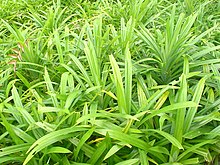3-methyl-3-pentanol
| Structural formula | ||||||||||||||||
|---|---|---|---|---|---|---|---|---|---|---|---|---|---|---|---|---|

|
||||||||||||||||
| General | ||||||||||||||||
| Surname | 3-methyl-3-pentanol | |||||||||||||||
| other names |
|
|||||||||||||||
| Molecular formula | C 6 H 14 O | |||||||||||||||
| Brief description |
light yellow liquid |
|||||||||||||||
| External identifiers / databases | ||||||||||||||||
|
||||||||||||||||
| properties | ||||||||||||||||
| Molar mass | 102.17 g mol −1 | |||||||||||||||
| Physical state |
liquid |
|||||||||||||||
| density |
0.824 g cm −3 (25 ° C) |
|||||||||||||||
| Melting point |
−38 ° C |
|||||||||||||||
| boiling point |
123 ° C |
|||||||||||||||
| solubility |
|
|||||||||||||||
| Refractive index |
1.418 (20 ° C) |
|||||||||||||||
| safety instructions | ||||||||||||||||
|
||||||||||||||||
| Toxicological data | ||||||||||||||||
| As far as possible and customary, SI units are used. Unless otherwise noted, the data given apply to standard conditions . Refractive index: Na-D line , 20 ° C | ||||||||||||||||
3-methyl-3-pentanol is a chemical compound from the group of alkanols .
Occurrence
The compound occurs naturally in pandan leaves , red pepper, and fruits of Lycii fructus .
Extraction and presentation
3-Methyl-3-pentanol ( 2 ) can be obtained by reacting ethylmagnesium bromide with ethyl acetate ( 1 ) in a Grignard reaction in dry diethyl ether or tetrahydrofuran .
Other possible variants of the Grignard reaction are the reaction of methyl magnesium bromide with 3-pentanone and the reaction of ethyl magnesium bromide with butanone .
The compound can also be prepared by reacting ( E ) -3-methyl-2-pentene with sulfuric acid .
properties
3-methyl-3-pentanol is a light yellow liquid that is sparingly soluble in water.
use
3-Methyl-3-pentanol can be used to make other chemical compounds (such as Emylcamat ) and as a solvent .
Individual evidence
- ↑ a b c d e f g h i j k data sheet 3-methyl-3-pentanol, ≥98%, FG from Sigma-Aldrich , accessed on January 14, 2019 ( PDF ).
- ↑ a b c David R. Lide: CRC Handbook of Chemistry and Physics A Ready-reference Book of Chemical and Physical Data . CRC Press, 1995, ISBN 978-0-8493-0595-5 , pp. 400 ( limited preview in Google Book Search).
- ^ Frank C. Whitmore: Organic Chemistry, Volume One Part I: Aliphatic Compounds Part II: Alicyclic Compounds . Courier Corporation, 2012, ISBN 978-0-486-60700-9 , pp. 128 ( limited preview in Google Book search).
- ^ Alyn William Johnson: Invitation to Organic Chemistry . Jones & Bartlett Learning, 1999, ISBN 978-0-7637-0432-2 , pp. 199 ( limited preview in Google Book search).
- ↑ Franz v. Bruchhausen, Gerd Dannhardt, Siegfried Ebel, August W. Frahm, Eberhard Hackenthal, Ulrike Holzgrabe: Hagers Handbook of Pharmaceutical Practice Volume 8: Substances EO . Springer-Verlag, 2013, ISBN 978-3-642-57994-3 , pp. 21 ( limited preview in Google Book search).
- ↑ Vicente Gotor, Ignacio Alfonso, Eduardo García-Urdiales: Asymmetric Organic Synthesis with Enzymes . John Wiley & Sons, 2008, ISBN 3-527-31825-9 , pp. 10 ( limited preview in Google Book search).



